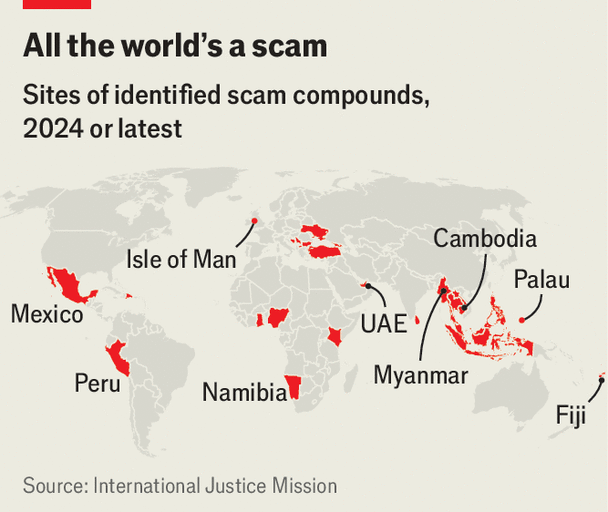Unraveling the Motives and Methods Behind Digital Deception. 
Scams are a growing threat in our digital world, costing billions and leaving victims emotionally and financially scarred. But why do scammers scam? Who are they, and how do they operate? For those unfamiliar with this shadowy world, understanding the motives, techniques, and global reach of scammers can help you stay vigilant. This article explores the research-backed reasons behind scamming, how it’s done, the role of technology, why English-speaking regions are prime targets, and where these operations are based.
The Motivation Behind Scamming
At its core, scamming is driven by financial gain. Research highlights that scammers aim to extract money, personal information, or valuable assets through deception. A study from the Federal Trade Commission notes that U.S. consumers lost nearly $12.5 billion to scams in 2024 alone, a 30% rise from the previous year, underscoring the profit motive. For some, like a reformed Nigerian scammer named "Chris" interviewed by CBS 17, desperation plays a role; unemployment and inability to pay for education pushed him into scamming, earning tens of thousands before quitting due to guilt. Others are motivated by greed, exploiting vulnerabilities with little personal risk due to anonymity online. Psychological factors, such as exploiting trust or emotional triggers like loneliness, are also key, as noted by experts like Dr. Patricia Harney, a psychologist and scam victim, who points to scammers’ use of urgency and safety promises to manipulate victims.
How Scammers Operate
Scammers employ a structured approach to deceive their targets. Research by Monica Whitty (2013) outlines a typical process: they first research potential victims, gathering data from social media or data breaches to identify vulnerabilities like age or financial status. Next, they initiate contact, via email, phone, or social media, using persuasive tactics like impersonating authority figures (e.g., bank officials) or creating urgency (e.g., fake tax demands). Once trust is gained, they extract money or information, often through requests for wire transfers or personal details. A study on WhatsApp scams in Nigeria reveals how fraudsters invite victims to fake groups, promising sports betting tips or crypto profits, only to demand payments or personal data. Human curation, as seen in Flagged’s moderation process, shows how scammers adapt tactics based on real-world feedback, making their schemes harder to detect.
The Role of Technology
Technology is a scammer’s best tool, amplifying their reach and sophistication. The United Nations Office on Drugs and Crime (UNODC) reports that scammers use malware to steal login details and emerging tools like ChatGPT to craft convincing messages in multiple languages. Europol notes that large language models (LLMs) enable faster, more authentic scams at scale. In Southeast Asia’s fraud factories, trafficked victims with IT skills develop AI capabilities, as shared by a freed Myanmar engineer who described technology more advanced than anything she’d studied. Spoofing Caller IDs and phishing emails, as warned by the Minnesota Attorney General, allow scammers to target thousands cheaply, while counterfeit checks and fake apps exploit digital trust, making prevention a constant challenge.
Why the English-Speaking World?
English-speaking countries, particularly the U.S., are disproportionately targeted. Research from Hummer and Byrne (2023) suggests Americans face higher scam victimization rates, possibly due to their wealth and widespread internet use; key factors for profitable targets. The language’s global dominance also helps; scammers can reuse English-based templates across regions like the UK, Canada, and Australia. A study on cross-border fraud notes that English-speaking areas have robust financial systems, attracting scammers seeking larger payouts. Cultural factors, like a sympathetic view of cons (noted at the 2018 Social Research Conference), may also reduce skepticism, though this varies by individual.
Where Scammers Operate From

Many scamming operations originate in regions with economic challenges or lax enforcement. Nigeria is a known hub, with "Chris" describing widespread youth involvement due to unemployment. Southeast Asia, especially Myanmar and Cambodia, hosts fraud factories tied to Chinese organized crime, as reported by CSIS, generating $3 trillion annually. These centers use trafficked labor, often from over 100 countries, to run scams. China contributes through emergency and IRS imposter scams, per Tech Business News, while India and Eastern Europe also feature in tech-driven frauds. The anonymity of online platforms allows scammers to operate remotely, bouncing signals globally to evade detection.
Staying Safe
Understanding scammers’ motives and methods empowers you to protect yourself. Verify unsolicited contacts, avoid sharing personal data, and research charities or investments. Tools like Flggd can help report suspicious activity, feeding into collective defense efforts. By staying informed, you can help disrupt this global problem.


